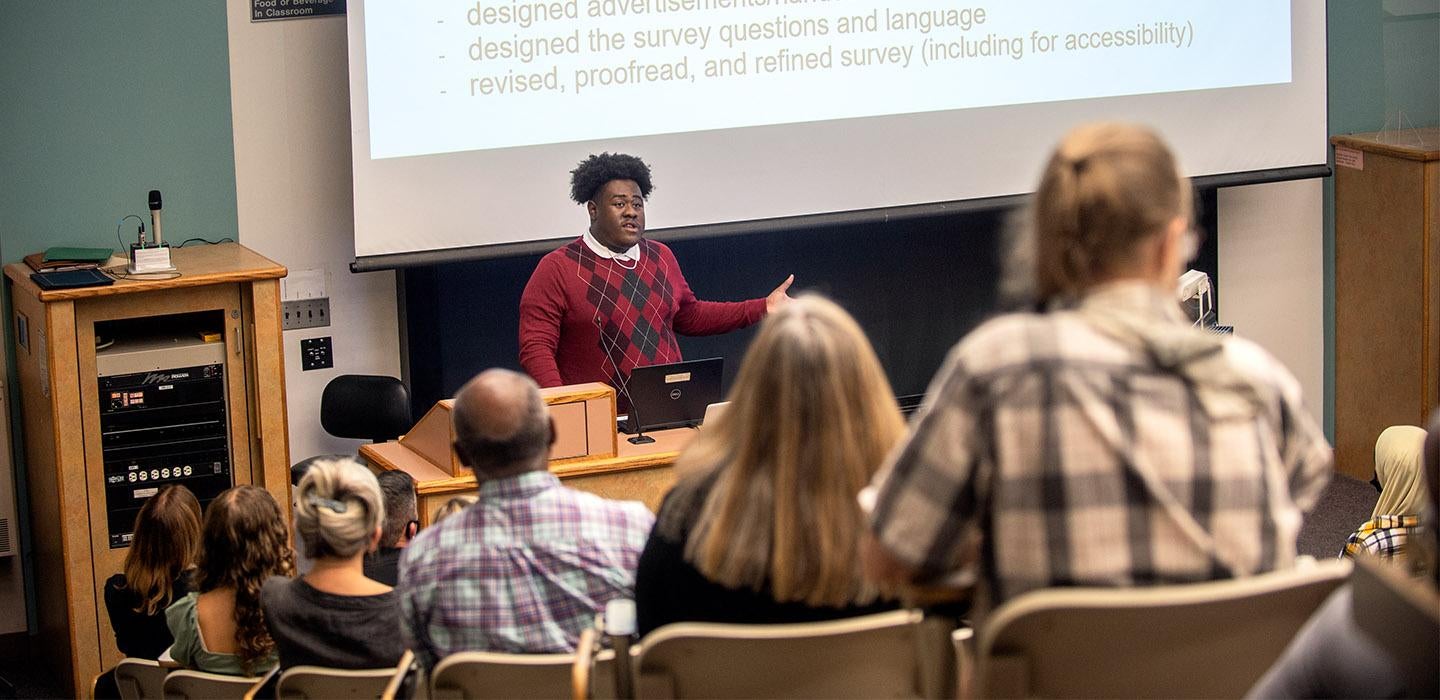
Subscribe to Pittwire Today
Get the most interesting and important stories from the University of Pittsburgh.To create Pitt’s Public Health Science Academy, take 10 teenagers from three Pittsburgh high schools, add 10 faculty mentors, mix with inspiration for four weeks and finish with possibly life-changing results.
That’s the recipe that School of Public Health Dean Maureen Lichtveld crafted to attract more underrepresented students to the field, as well as to college itself.
“The goal is to demonstrate to high school juniors and seniors that there is a path to college,” said Lichtveld, who is also the Jonas Salk Professor of Population Health and professor of environmental and occupational health.
Students in the program developed projects examining a range of scientific disciplines and presented their findings to an audience of family members, friends and Pitt Public Health mentors at a ceremony on July 22.
Quincy Peterson (pictured), a rising senior at Taylor Allderdice High School, stood at the podium resplendent in a burgundy sweater with a green, black and white argyle pattern. Working with microbiologist David Givens, an instructor in infectious diseases, Peterson completed a community engagement survey for people living with HIV. Though the HIV epidemic “started long before I was born — in the 1980s,” the survey project made an impact, he said.
Peterson’s project involved developing questions, conducting interviews, collating answers into data points and learning software tools to manage the process.
“I loved doing interviews. Sometimes it made my day,” said Peterson, calling Pitt’s program a spark for personal growth. “Public health is about prevention and prevention is the key,” he said. “To help someone, you have to meet them where they are.”
Aaliyah Campbell and Darius Symms are rising juniors at the Pittsburgh Science and Technology Academy. After college, they plan to pursue engineering careers.
“Throughout the program, I’ve gained a lot of important and new knowledge about public health, specifically environmental health,” said Campbell.
“This is because wood chips also contain bacteria that emit heat as they digest the wood,” said Symms.
During a group meeting with Pittsburgh Mayor Ed Gainey, Campbell and Symms suggested that city leaders consider using a heat vulnerability index to map hot spots to help determine the best places to locate cooling centers in the city.
“Aaliyah and Darius are emerging climate and health scholars who demonstrated the benefits of trees to counter climate change-related effects of heat,” said Lichtveld, who mentored the students along with public health faculty member Hannah Covert and PhD candidate Samantha Totoni. Public Health Science Academy course directors included Covert, Toni Deslouches in the Department of Environmental and Occupational Health and Beth Hoffman in the Department of Behavioral and Community Health Sciences.
“Being able to make all sorts of connections with the staff, mentors and others gave us positive role models,” Symms said. “This experience will be influential in how I communicate and conduct my research in the field.”
Campbell added: “The people I’ve met through the program have helped me to view the world of science differently. I know that with all that I have learned — the lectures, research and public speaking — that I can grow to be a great scientist in the new future.”
— Michele Baum


